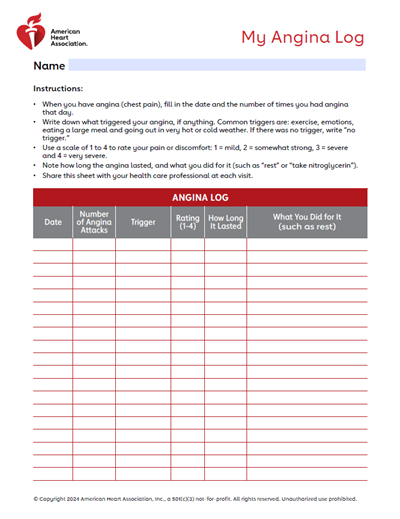Cardiac Rehabilitation Angina Log
Angina is pain or discomfort in your chest that usually occurs based on activity or emotion but goes away with rest.
The pain is due to your heart muscle not getting enough oxygen because there is reduced blood flow through coronary arteries that have become narrowed or blocked. The narrowing of coronary (heart) arteries by fatty plaques is called coronary artery disease, or CAD.
A log, or record, of your angina symptoms helps show what angina is like for you and how your angina pattern changes over time. The log helps your health care team regulate your medications and decide on future treatments.
- On days you have angina, fill in the date and the number of times you had angina that day.
- Write down what triggered your angina, if anything. Common triggers are exercise, emotions, eating a large meal and going out in cold weather. If there was no trigger, write "no trigger."
- Use a scale of 1 to 4 to rate your pain or discomfort: 1 = mild, 2 = somewhat strong, 3 = severe, 4 = very severe.
- Note how long the angina lasted and what you did for it, such as rest or take nitroglycerin.
- Take your log with you and show it to your health care team at each visit.






